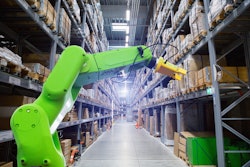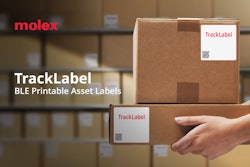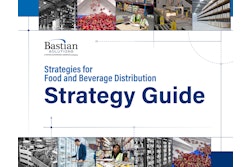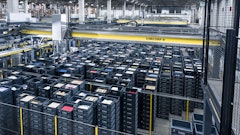
There have been numerous technological shifts in logistics, supply chain and distribution over the past several years, but none are as transformative as the rise of B2B marketplaces. These digital platforms are fundamentally changing how products move from manufacturers to store shelves, creating unprecedented efficiencies and opportunities throughout the supply chain.
The virtual warehouse revolution
At the heart of this transformation is the "virtual warehouse" concept. Traditional distribution relies exclusively on physical warehouse space, a model that increasingly struggles with challenges of product proliferation and capacity constraints. But B2B marketplaces are built around virtual warehouses, essentially creating an additional distribution center in the cloud for the distributor, which is exclusively accessed online by the distributor’s retail customers. These virtual warehouses are branded and customized for the distributor and contain an unlimited number of products from thousands of suppliers that the distributor can sell to its customers without stocking, or even handling, a single item. When the retailer customer places an order for any item in the distributor’s marketplace, specialized marketplace technology that operates the marketplace for the distributor electronically passes the order direct to the supplier, confirms the order, manages the shipping of the products ordered from the supplier direct to the retail store, creates an invoice for the order from the distributor to its retail customer, and confirms receipt of the products at the store (cases ship by UPS or LTL). The distributor collects payment from the retailer in the usual course, while the marketplace operator pays the shipping and the supplier, leaving the distributor with its profit on the sale even though the distributor did not handle the products or have any risk in the sale.
This approach represents more than just a logistical change; it's a fundamental rethinking of distribution in the digital age. Warehouse capacity constraints have become one of the most significant barriers to growth for distributors. Most operate at or near capacity, limiting their ability to onboard new products despite increasing retailer demand for expanded assortments.
Transforming the distribution ecosystem
For distributors, the marketplace model enables expanded product selection without corresponding investment in inventory or warehouse space. Digital marketplaces allow distributors to multiply their product offerings while maintaining the same physical infrastructure, capturing greater wallet share from existing customers.
The model creates new revenue opportunities by enabling distributors to offer specialty items that might otherwise flow through alternative channels. Today's grocery retailers seek access to tens of thousands of unique products—far beyond what traditional distribution can efficiently accommodate through physical warehousing alone.
For manufacturers, especially emerging brands, B2B marketplaces provide unprecedented market access. Traditional distribution typically requires brands to build presence region by region—a process that can take years and significant capital. The marketplace model compresses this timeline dramatically, allowing brands to reach retailers nationally within weeks of onboarding.
This accelerated access eliminates the traditional catch-22 where brands need distribution to build awareness but need awareness to secure distribution. Additionally, manufacturers gain valuable access and visibility into retailers across the country that would be impossible through fragmented distribution channels.
Retailers benefit through expanded assortment capabilities, as industry research consistently shows that product selection remains among the top factors influencing store choice for consumers. By leveraging marketplace distribution, retailers can create localized assortments that reflect specific customer demographics without the traditional constraints of warehouse-based distribution.
Technology foundation and implementation
The sophisticated technology platforms underpinning successful marketplaces handle complex processes including order processing, logistics optimization, payment processing, and customer service. Marketplace technology allows "distribution without seams," where products flow effortlessly from manufacturer to end retailer without creating operational complexity for distributors or retailers.
Successful implementation typically follows several key principles:
First is technology integration with the distributors’ existing systems. My experience implementing marketplace solutions has shown that prioritizing integration with existing systems achieves significantly higher adoption rates than requiring distributors to adopt entirely new platforms.
Second is efficient supplier onboarding. The marketplace's value depends directly on its product selection, making manufacturer recruitment a critical success factor.
Third is retailer education. While the concept is straightforward, retailers often need guidance on leveraging expanded assortments effectively. Distributors investing in this education see faster adoption and higher utilization.
The hybrid future
The distinction between traditional distribution and marketplace-enabled fulfillment is increasingly blurred. The most successful distribution operations now combine both models, creating a hybrid approach that leverages the strengths of each.
High-velocity, commoditized products continue flowing through traditional warehouse channels, where economies of scale remain advantageous. Meanwhile, specialty, seasonal, and emerging products reach retailers through marketplace platforms, creating an expanded assortment without the constraints, costs and risks of warehouse capacity.
Based on current adoption trends, hybrid distribution models are becoming the dominant approach in consumer goods industries, with marketplace platforms accounting for a significant portion of distribution volume while requiring a fraction of the operational resources needed for traditional distribution.
This hybrid model optimizes simultaneously for efficiency and product variety—goals that have traditionally been in tension. By leveraging B2B marketplaces, the food industry can overcome physical infrastructure limitations while meeting consumer demands for greater product diversity.
This transformation represents not just a technological advance but a fundamental reimagining of the distribution model that has existed for decades. The companies that embrace this digital evolution will be best positioned to thrive in an increasingly complex retail landscape. The warehouse will always remain central to food distribution, but the virtual warehouse is rapidly becoming an equally essential component of the modern supply chain.



















